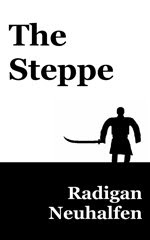 "While investigating Tibetan books in the library of a former lamaistic university of Gandan, I found a book, by Lovsan-Yondon and Tsend-Otcher, entitled in free translation Anatomical Dictionary for Recognizing Various Diseases. It was a typical Tibetan book, printed from woodcuts on long, narrow strips of paper. Each leaf was printed on both sides and each page was from a separately cut wooden plate. In the systematic discussion of the fauna of Tibet and adjacent regions I found on p. 24, in a group of monkeys, an illustration of a wild man. This illustration shows a biped primate standing erect on a rock, with one arm stretched upwards....
"While investigating Tibetan books in the library of a former lamaistic university of Gandan, I found a book, by Lovsan-Yondon and Tsend-Otcher, entitled in free translation Anatomical Dictionary for Recognizing Various Diseases. It was a typical Tibetan book, printed from woodcuts on long, narrow strips of paper. Each leaf was printed on both sides and each page was from a separately cut wooden plate. In the systematic discussion of the fauna of Tibet and adjacent regions I found on p. 24, in a group of monkeys, an illustration of a wild man. This illustration shows a biped primate standing erect on a rock, with one arm stretched upwards...."While studying the literature in the central library of the Scientific Committee in Mongolia I found, in the Tibetan department, another, more recent, edition of the above book, printed a century later in Urga (now Ulanbator). The author of this edition was Jambaldorje. An illustration of the above biped primate, along with monkeys, appears in this book also as part of a systematic discussion of Tibetan natural history on p. 119....
"Left of the picture there is a Tibetan text which in free translation runs: 'The wild man lives in the mountains, his origin is close to that of the bear, his body resembles that of man and he has enormous strength. His meat may be eaten to treat mental diseases and his gall cures jaundice.'"
--Emanuel Vlcek, "Old Literary Evidence for the Existence of the 'Snow Man' in Tibet and Mongolia," Man, volume 59, 1959 August, pages 133-134





No comments:
Post a Comment